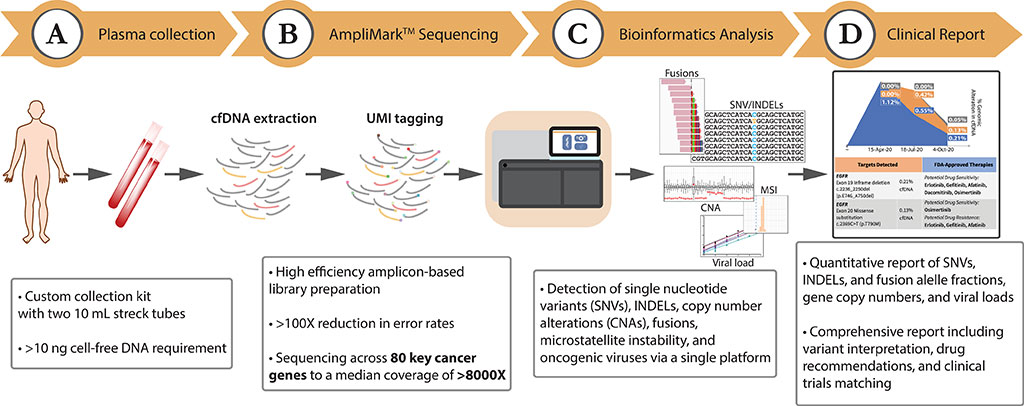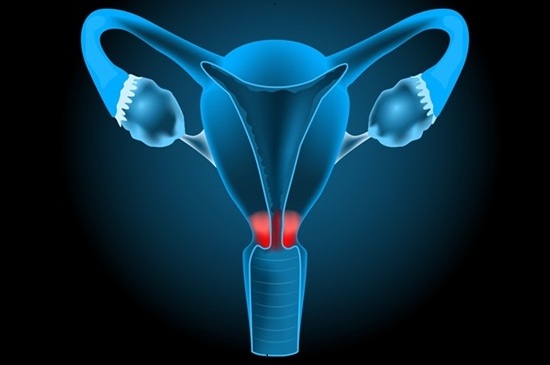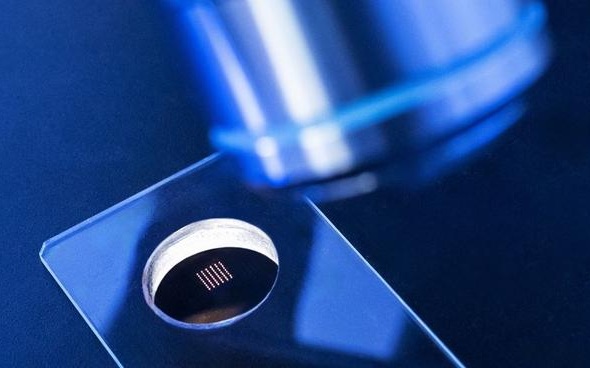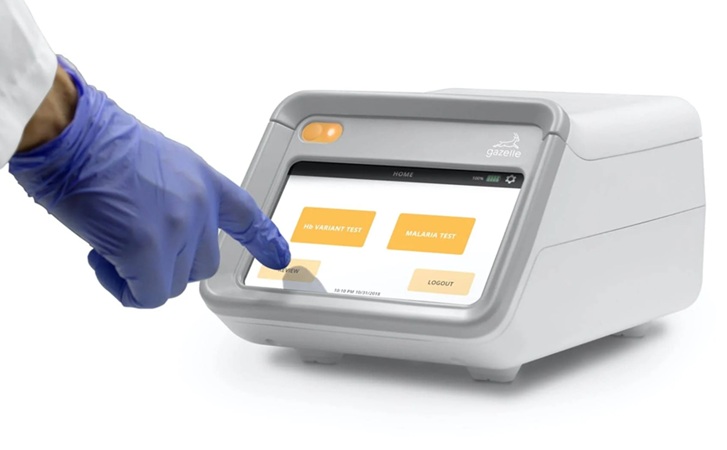Circulating Tumor DNA Test Clinically Validated
|
By LabMedica International staff writers Posted on 23 May 2022 |

Next-generation sequencing of circulating tumor DNA presents a promising approach to cancer diagnostics, complementing conventional tissue-based diagnostic testing by enabling minimally invasive serial testing and broad genomic coverage through a simple blood draw to maximize therapeutic benefit to patients.
The diagnosis and sub-classification of cancers, fundamental to any cancer treatment algorithm, has historically been achieved through the study of the primary tumor tissue. The availability of high-quality diagnostic material suitable for high-end genomic technologies, including multiplexed tissue-based genotyping, is often limiting and associated with high risks and costs.
Scientists from Lucence Diagnostics Pte Ltd (Singapore, Singapore) collected 1,592 consecutive clinical samples included in the observational analyses were received as routine clinical samples and underwent standard processing and reporting at a CAP- and CLIA-accredited laboratory. Tubes of whole blood were collected for each patient in Streck Cell-Free DNA BCT (Streck, La Vista, NE, USA), shipped to Lucence Diagnostics at ambient temperature, and processed within 6–48 hours of sample collection.
The team used the Lucence Diagnostics’ LiquidHALLMARK which is an amplicon-based next-generation sequencing assay developed for the genomic profiling of plasma-derived cell-free DNA (cfDNA). The comprehensive 80-gene panel profiles point mutations, insertions/deletions, copy number alterations, and gene fusions, and further detects oncogenic viruses (Epstein-Barr virus (EBV) and hepatitis B virus (HBV)) and microsatellite instability (MSI).
The investigators reported analytical validation using reference genetic materials demonstrated a sensitivity of 99.4% for point mutations and 95.8% for insertions/deletions at 0.1% variant allele frequency (VAF), and a sensitivity of 91.7% for gene fusions at 0.5% VAF. In non-cancer samples, a high specificity (≥99.9999% per-base) was observed.
The limit of detection for copy number alterations, EBV, HBV, and MSI were also empirically determined. Orthogonal comparison of epidermal growth factor receptor (EGFR) variant calls made by LiquidHALLMARK and a reference allele-specific polymerase chain reaction (AS-PCR) method for 355 lung cancer specimens revealed an overall concordance of 93.8%, while external validation with cobas EGFR Mutation Test v2 (Roche, Basel, Switzerland) for 50 lung cancer specimens demonstrated an overall concordance of 84.0%, with a 100% concordance rate for EGFR variants above 0.4% VAF.
Clinical application of LiquidHALLMARK in 1,592 consecutive patients demonstrated a high detection rate (74.8% circulating tumor DNA (ctDNA)-positive in cancer samples) and broad actionability (50.0% of cancer samples harboring alterations with biological evidence for actionability). Among ctDNA-positive lung cancers, 72.5% harbored at least one biomarker with a guideline-approved drug indication.
The authors concluded that their results established the high sensitivity, specificity, accuracy, and precision of the LiquidHALLMARK assay and supports its clinical application for blood-based genomic testing. The study was published on April 29, 2022 in the journal PLOS ONE.
Related Links:
Lucence Diagnostics Pte Ltd
Streck
Roche
Latest Molecular Diagnostics News
- Multi-Cancer Early Detection Blood Test Increases Cancer Detection
- Portable Label-Free Device Tracks Alzheimer's Disease in Real Time
- Liquid Biopsy Test Enables Early Detection of ICI-Related Myocarditis
- Rapid POC Diagnostic Test Detects Asymptomatic Malaria Cases
- Improved DNA Sequencing Tool Uncovers Hidden Mutations Driving Cancer
- Newborn Genomic Screening Enables More Lifesaving Diagnoses
- Blood Protein Tests Could Identify Distinct Molecular Fingerprints of Multiple Diseases
- Interstitial Lung Disease Test Could Identify Patients Before Symptoms Appear
- Genomic-First Approach Identifies Rare Genetic Disorders Earlier
- Simple Blood Test Could Reveal Kidney Disease Earlier
- Revolutionary Blood Test Accurately Diagnoses Chronic Fatigue Syndrome
- Stool-Based DNA Testing Leads to Timely Colonoscopy
- Groundbreaking Tool Improves Genetic Testing Accuracy
- Biomarker Blood Test Could Predict Development of Long COVID
- Polygenic Risk Score Blood Test Predicts Future Breast Cancer
- AI-Powered Blood Tests Enable Early Detection of Alzheimer’s Disease
Channels
Clinical Chemistry
view channel
VOCs Show Promise for Early Multi-Cancer Detection
Early cancer detection is critical to improving survival rates, but most current screening methods focus on individual cancer types and often involve invasive procedures. This makes it difficult to identify... Read more
Portable Raman Spectroscopy Offers Cost-Effective Kidney Disease Diagnosis at POC
Kidney disease is typically diagnosed through blood or urine tests, often when patients present with symptoms such as blood in urine, shortness of breath, or weight loss. While these tests are common,... Read moreHematology
view channel
Viscoelastic Testing Could Improve Treatment of Maternal Hemorrhage
Postpartum hemorrhage, severe bleeding after childbirth, remains one of the leading causes of maternal mortality worldwide, yet many of these deaths are preventable. Standard care can be hindered by delays... Read more
Pioneering Model Measures Radiation Exposure in Blood for Precise Cancer Treatments
Scientists have long focused on protecting organs near tumors during radiotherapy, but blood — a vital, circulating tissue — has largely been excluded from dose calculations. Each blood cell passing through... Read more
Platelets Could Improve Early and Minimally Invasive Detection of Cancer
Platelets are widely recognized for their role in blood clotting and scab formation, but they also play a crucial role in immune defense by detecting pathogens and recruiting immune cells.... Read more
Portable and Disposable Device Obtains Platelet-Rich Plasma Without Complex Equipment
Platelet-rich plasma (PRP) plays a crucial role in regenerative medicine due to its ability to accelerate healing and repair tissue. However, obtaining PRP traditionally requires expensive centrifugation... Read moreImmunology
view channel
Molecular Microscope Diagnostic System Assesses Lung Transplant Rejection
Lung transplant recipients face a significant risk of rejection and often require routine biopsies to monitor graft health, yet assessing the same biopsy sample can be highly inconsistent among pathologists.... Read more
Blood Test Tracks Treatment Resistance in High-Grade Serous Ovarian Cancer
High-grade serous ovarian cancer (HGSOC) is often diagnosed at an advanced stage because it spreads microscopically throughout the abdomen, and although initial surgery and chemotherapy can work, most... Read more
Luminescent Probe Measures Immune Cell Activity in Real Time
The human immune system plays a vital role in defending against disease, but its activity must be precisely monitored to ensure effective treatment in cancer therapy, autoimmune disorders, and organ transplants.... Read more
Blood-Based Immune Cell Signatures Could Guide Treatment Decisions for Critically Ill Patients
When a patient enters the emergency department in critical condition, clinicians must rapidly decide whether the patient has an infection, whether it is bacterial or viral, and whether immediate treatment... Read moreMicrobiology
view channel
Fast Noninvasive Bedside Test Uses Sugar Fingerprint to Detect Fungal Infections
Candida bloodstream infections are a growing global health threat, causing an estimated 6 million cases and 3.8 million deaths annually. Hospitals are particularly vulnerable, as weakened patients after... Read more
Rapid Sepsis Diagnostic Device to Enable Personalized Critical Care for ICU Patients
Sepsis is a life-threatening condition that occurs when the body’s response to infection spirals out of control, damaging organs and leading to critical illness. Patients often arrive at intensive care... Read morePathology
view channel
AI Improves Cervical Cancer Screening in Low-Resource Settings
Access to cervical cancer screening in low- and middle-income countries remains limited, leaving many women without early detection for this life-threatening disease. The lack of access to laboratories,... Read more
New Multi-Omics Tool Illuminates Cancer Progression
Tracking how cancers evolve into more aggressive and therapy-resistant forms has long been a challenge for researchers. Many current tools can only capture limited genetic information from tumor samples,... Read moreTechnology
view channel
Acoustofluidic Device to Transform Point-Of-Care sEV-Based Diagnostics
Rapid and sensitive detection of small extracellular vesicles (sEVs)—key biomarkers in cancer and organ health monitoring—remains challenging due to the need for multiple preprocessing steps and bulky... Read more
AI Algorithm Assesses Progressive Decline in Kidney Function
Chronic kidney disease (CKD) affects more than 700 million people worldwide and remains a major global health challenge. The condition often progresses silently, and many patients remain undiagnosed until... Read more
Taste-Based Influenza Test Could Replace Nasal Swabs with Chewing Gum
Influenza is one of the most dangerous infectious diseases worldwide, claiming around half a million lives each year. What makes it particularly insidious is that flu viruses are contagious even before... Read more
3D Micro-Printed Sensors to Advance On-Chip Biosensing for Early Disease Detection
Early-stage disease diagnosis depends on the ability to detect biomarkers with exceptional sensitivity and precision. However, traditional biosensing technologies struggle with achieving this at the micro-scale,... Read moreIndustry
view channel
Bio-Rad and Biodesix Partner to Develop Droplet Digital PCR High Complexity Assays
Bio-Rad Laboratories (Hercules, CA, USA) and Biodesix (Louisville, CO, USA) have expanded their partnership agreement under which Biodesix will conduct the development, clinical validation, and regulatory... Read moreHologic to be Acquired by Blackstone and TPG
Hologic (Marlborough, MA, USA) has entered into a definitive agreement to be acquired by funds managed by Blackstone (New York, NY, USA) and TPG (San Francisco, CA, USA) in a transaction valued at up to... Read more
Bio-Techne and Oxford Nanopore to Accelerate Development of Genetics Portfolio
Bio-Techne Corporation (Minneapolis, MN, USA) has expanded its agreement with Oxford Nanopore Technologies (Oxford, UK) to broaden Bio-Techne's ability to develop a portfolio of genetic products on Oxford... Read more














